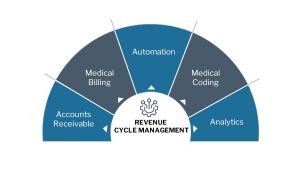Creating a job applicant evaluation system in the cloud
Background
Recruiters use a human resources management system (or HRMS) to search internal and external databases (like Monster.com, Dice.com, and LinkedIn.com) for resumes that best match a particular job. These applications let recruiters complete other functions, including creating job descriptions that meet industry search standards, rating a resume, conducting an interview, assessing a candidate, and making a job offer.
ESN worked with a client to develop a cross-platform, cloud-based HRMS application with facial-detection functions. The client also needed the HRMS to identify, in detail, the current stage of each job application or resume-creation process.
Challenges
- Developing a cloud-based application and using services from other interfaces
to the cloud. - In natural-language processing, a single word can be used for multiple purposes. Distinguishing between words is a huge challenge. Overfitting and underfitting in the machine-learning model are also challenging.
- Facial recognition: as machine learning models learn from the data, more data is needed for better accuracy so that our models can learn all the features of an image.
Technology and Tools
- Microsoft Azure
- Microsoft ML used a neural network, linear regression and
- Bayesian linear algorithms
- Team Foundation Server (source control and management)
- NLTK (natural language toolkit)
- OpenCV
- Python 3.5.2 and 3.6
- Pandas, NumPy, and SKLearn
- NET (Visual Studio 2015)
- AngularJS Framework
- Bootstrap, HTML5, CSS3
- SQL Azure
- Web API SERVICES (RESTful)
Results
ESN created the HRMS application on time and met the client’s business expansion plans. The application:
- Ranks the job description and job title based on data that is available internally, which helps the recruiter write a good job description and title, so creating best-match resumes and finding the best candidate are much easier.
- Parses the resume(s) and fetches important information such as technical skills, work history, and education history so that the recruiter can quickly review a candidate.
- Ranks the best-matched resumes based on the recruiter’s keywords and job description. The recruiter can then review, rate, schedule an interview, assess, and hire or reject the candidate.
Allows candidates to register with the client using a profile image. The client uses the same image to verify that the correct candidate is being interviewed and vetted.






